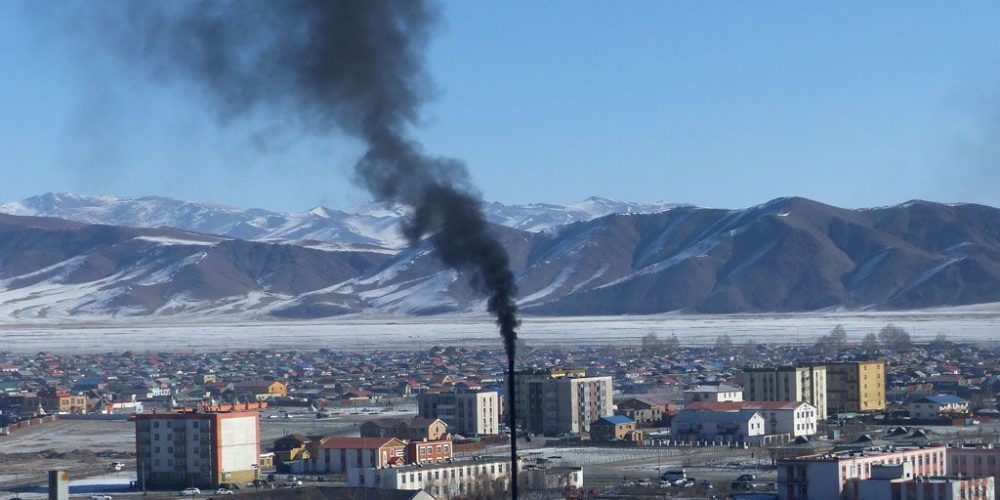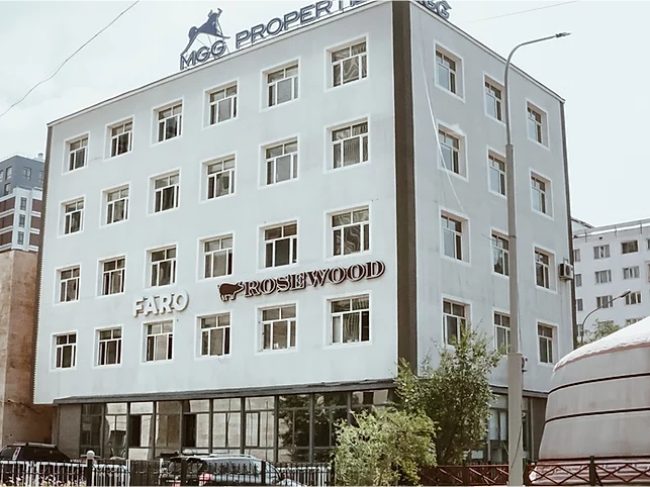Mongolia is in the midst of a demographic change as the rapidly growing population increasingly gravitates toward the cities, creating a need for energy that cannot keep pace with demands.
On the periphery of urban areas, the informal ger areas lack public services such as district heating. Residents instead burn solid fuel, mainly raw coal and waste, for heat and cooking.
The country’s energy system is the most heavily dependent on coal among the developing member countries (DMCs) of the Asian Development Bank (ADB). In 2018, coal-fired combined heat and power (CHP) plants constituted 93% of total power generation in the country’s Central Energy System (CES), which accommodate more than 80% of the domestic demand.
This has created severe air pollution in the country, with all the accompanying health problems. According to the World Health Organization (WHO), annual mean particulate matter of less than 2.5 micrometers in diameter (PM2.5) in Ulaanbaatar is 6–10 times higher than the recommended safe levels of the WHO air quality guidelines. The pollution levels are worse during winter months, when the temperature can go below minus 40 degree Celsius.
The energy sector is Mongolia’s largest contributor to greenhouse gas (GHG) emissions, accounting for about two thirds of the country’s GHG emissions. According to Mongolia’s nationally determined contributions, GHG emissions will increase to 51.5 million tons of carbon dioxide (mtCO2) by 2030 in the business-as-usual scenario, with energy’s share of total emissions increasing to 81.5%. The country targets reducing GHG emissions by 7.3 mtCO2 by 2030 through emission reductions from power generation (4.9 mtCO2), industry (0.7 mtCO2), and transportation (1.7 mtCO2).
Because of the climate change impact, financial resources are less available for coal-fired CHP development/expansion projects. The delayed investment in new generation capacity combined with growing electricity demand have raised the utilization of aging CHP plants during peak energy demand hours in winter, exceeding 90%. The energy supply shortage during winter peak hours is an urgent challenge facing the country.
Decarbonizing Mongolia’s energy sector
Mongolia is among the most heavily coal dependent developing member countries of ADB, and its energy sector is the largest contributor to its greenhouse gas emissions, accounting for about two thirds of the total,” says Director General of ADB’s East Asia Department (EARD) James Lynch. “To decarbonize Mongolia’s energy sector, the government aims to increase the country’s share of renewable energy, especially wind and solar, which hold great potential for Mongolia.”
“To decarbonize Mongolia’s energy sector, the government aims to increase the country’s share of renewable energy, especially wind and solar, which hold great potential for Mongolia.”James Lynch, Director General, East Asia Department, Asian Development Bank
The country’s combined wind and solar power potential is estimated to be equivalent to 2,600 gigawatts (GW) of installed capacity or 5,457 terawatt-hours of clean electricity generation per year. The amount is enough to meet the country’s energy demand (around 1.2GW as of 2018), and can meet northeast Asia’s regional energy demand with a suitable transmission infrastructure. The government’s target is a share of renewable energy in total installed capacity of 20% by 2023 and 30% by 2030 as announced in the State Policy on Energy, 2015–2030.
“The country’s rich renewable energy resources have not been fully utilized yet for various reasons,” says Director of ADB’s Sustainable Infrastructure Division in the East Asia Department Sujata Gupta. “One of the challenges is the variability of renewable energy generation and the lack of regulation reserve—or flexible generation. Because the renewable energy output fluctuates subject to weather, the regulation reserve—usually contributed by the other power plants—needs to constantly fill the gap between the renewable energy outputs and demand.”
Further, even if a sufficient amount of regulation reserve is available, the country’s energy market lacks the system to provide regulation or ancillary service in an efficient manner. For those reasons, renewable energy plants’ output is curtailed during off-peak hours. This has made the country’s renewable energy investment less attractive for the private sector.
ADB is helping bring back blue skies to Mongolia
Recognizing the challenges, the Government of Mongolia requested ADB to support the installation of a battery energy storage system (BESS) in the country. The country’s first utility-scale advanced BESS with a capacity of 125 MW/160 MWh is being financed by an ADB loan of $100 million and grant of $3 million from the High-Level Technology Fund approved in April 2020.
“One of the challenges [in Mongolia] is the variability of renewable energy generation and the lack of regulation reserve. Because the renewable energy output fluctuates subject to weather, the regulation reserve—usually contributed by the other power plants—needs to constantly fill the gap between the renewable energy outputs and demand”.Sujata Gupta, Director, Sustainable Infrastructure Division, East Asia Department, Asian Development Bank
“Since the project BESS plant will be larger than the current world’s largest BESS in operation in Hornsdale, Australia, it will provide a blueprint for others to follow in the development and operation of large-scale BESS to decarbonize power systems in other DMCs,” says ADB Senior Energy Specialist and Project Team Leader Atsumasa Sakai.
The BESS plant will be owned and operated by the national transmission company, the National Power Transmission Grid, as a smart grid to strengthen the power supply reliability in the CES.The project expects to help transform the energy sector in the following ways:
Decarbonizing the energy sector. The project BESS plant would supply clean peaking power that is charged by renewable energy electricity and provide regulation reserve to integrate additional renewable energy capacity in the transmission grid. On successful completion in 2024 the project will supply 44 gigawatt-hours of clean peaking power annually, and support the integration of an additional 859 gigawatt-hours of renewable electricity into the CES grid annually. This will mean 842,039 tons of CO2 emissions less per year by 2025.
Strengthening the energy supply reliability. As a backup power plant in case of possible power failure, the project BESS plant will save the country from possible electricity/heat supply outages in winter.
Supporting private sector investment in renewable energy. The project is assisting the government to prepare market design and guidelines for ancillary service, utilizing regulation reserves provided by third parties. “This would help the country’s energy market transit from the current regulated operation to a more market-oriented operation, improving the sector efficiency,” says ADB Principal Energy Specialist Shigeru Yamamura. “Once completed, ancillary service with private sector owned battery plants would be possible, accelerating renewable energy development, and boosting reliability.”
ADB has also supported the government to improve energy sector efficiency with a separate technical assistance on smart energy systems, which covers automatic generation control and streamlined power settlement procedures, since December 2019.
“The transformation is coming soon,” says ADB Country Director in Mongolia Pavit Ramachandran. “Upon project completion, Mongolia’s energy sector as well as people’s lives will change. This will put on track the decarbonization of the energy sector and help unlock renewable energy potential to bring back blue skies to Mongolia’s urban areas.”
Source : https://www.adb.org/news/features/unlocking-mongolias-rich-renewable-energy-potential










